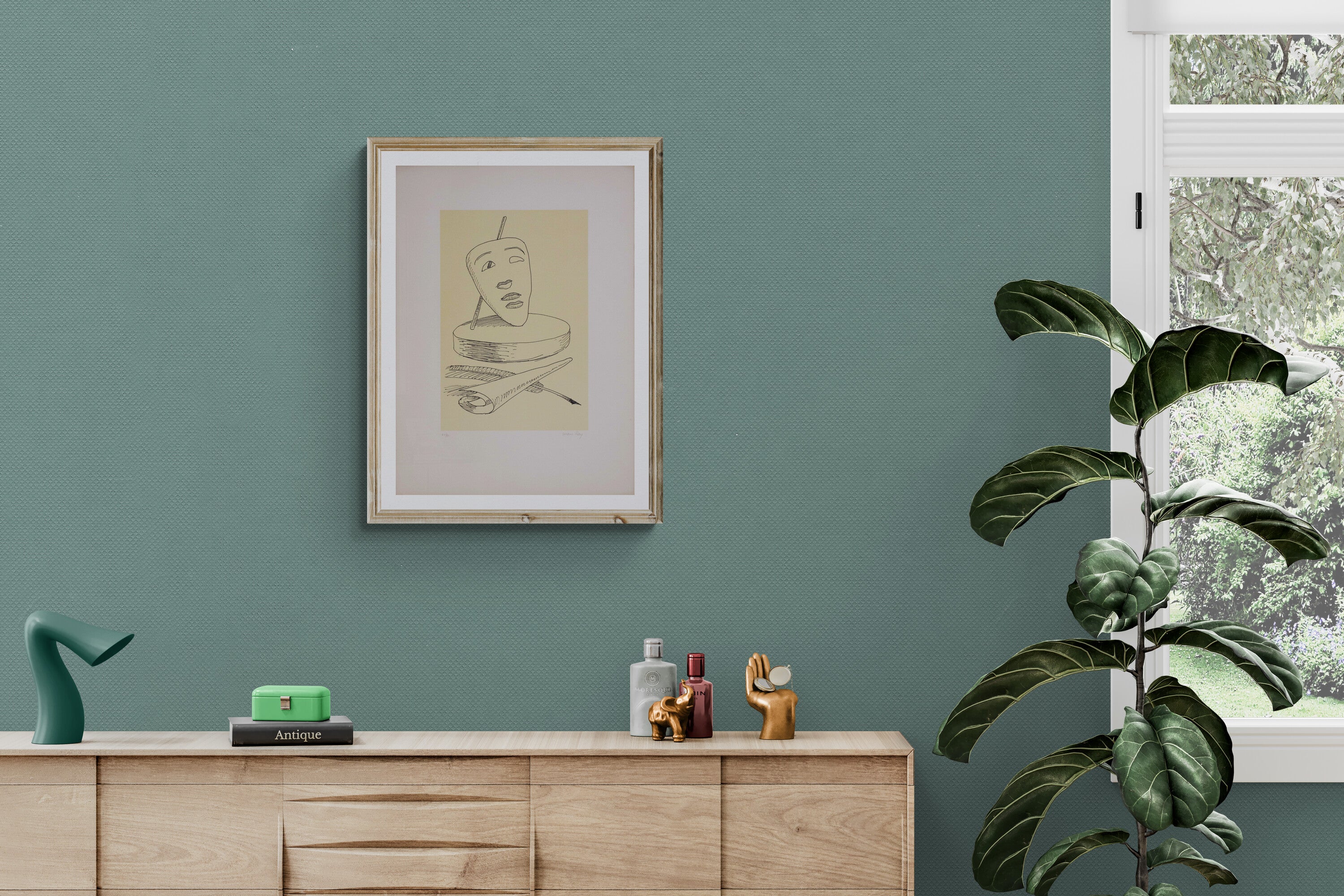Gaston Orellana biography

Gaston Orellana, born in 1933 in Valparaíso, Chile, from a family of Spanish origin from Extremadura, is one of the most important Spanish artists of the postwar period. This cultural blend, between his Chilean roots and Spanish heritage, helped shape an artistic personality of international relevance, with work marked by experiences in the Americas, Europe, and the United States.
Gaston Orellana began his artistic training at the Escuela Experimental de Educación Artistica in Santiago, Chile, then continued at the Escuela de Bellas Artes de Viña del Mar. During his training years, he also undertook archaeological studies at the Universidad de Chile, which led him to deepen the primary components of pre-Columbian culture, traces of which can be felt in various phases of his work.
In 1954, the artist met the famous poet Pablo Neruda, beginning an intense friendship that lasted until the poet's death. Toward the late 1950s, Gaston Orellana moved to Madrid, where he founded the Grupo Hondo in 1959, a milestone of the Nueva Figuración, a movement that received wide recognition in the European context. The year 1959 marked another significant event in the artist's career: participation in the exhibition The New Images of Man at the Museum of Modern Art (MOMA) in New York. This experience marked the beginning of his international success, culminating in 1965 with his move to the United States.
During his stay in New York, Gaston Orellana immersed himself in the city's vibrant cultural scene, establishing close ties with avant-garde culture and prominent figures such as Allen Ginsberg and Arthur Miller. In 1970, he was invited to the Venice Biennale with a solo exhibition in the Spanish pavilion. The exhibited artworks, including the famous painting El tren en llamas, were acquired by the renowned collector Joseph Hirshhorn for the Hirshhorn Museum and Sculpture Garden in Washington DC.
During his stay in Italy, Gaston Orellana experimented with new techniques, from glass sculpture in Murano to ceramics in Liguria, in Albisola, and integrated into a fertile exhibition context. He returned definitively to Europe in 1986, where a major exhibition was held at the Museo Español de Arte Contemporaneo in Madrid, curated by Germano Beringhelli. During this period, Gaston Orellana's art underwent significant evolution, as demonstrated by the exhibition at the Casa das Artes in Vigo, Spain, in 1995. Here the artist presented the new Orellana, with painting enriched by techniques derived from terracotta work and the incorporation of deeper themes.
In 1995, art dealer Christian Stein, at the Venice Biennale, declared that Gaston Orellana is the most interesting artist Spain has created after Tàpies and Miró. In 1998, Stein organized a solo exhibition of the artist at her pavilion at the ARCO fair in Madrid. Gaston Orellana's later years show a further evolution of his works, adopting graffito techniques never before used in painting and adding collages of various elements, such as metals and antique mirrors. Through paintings shaped like letters and the use of multiple canvases, Gaston Orellana introduces a literal dimension into painting, while still maintaining the use of metaphors. In 2005, the artwork Crucifixion n1 was exhibited for the first time at the Santa Casa di Loreto, property of the Vatican Museums. In the same year, the artwork La cama escarlata (NY 1967) was included in the exhibition Il male at the Palazzina di Caccia di Stupinigi in Turin.
Gaston Orellana's artwork in the recent period shows a marked evolution compared to his New York works. He began creating colossal assemblages and polyptychs, using graffito techniques never before used in painting and introducing collages of various elements such as metals and antique mirrors. With paintings shaped like letters and the juxtaposition of multiple canvases, Gaston Orellana brings painting toward object art, communicating the literalness of the thing itself, while maintaining the use of metaphors. Gaston Orellana has marked the postwar artistic scene with his bold exploration of new pictorial languages. To date, the Archivo Gastón Orellana, founded in 2018, is dedicated to the preservation, protection, and dissemination of his vast artistic and intellectual heritage.



